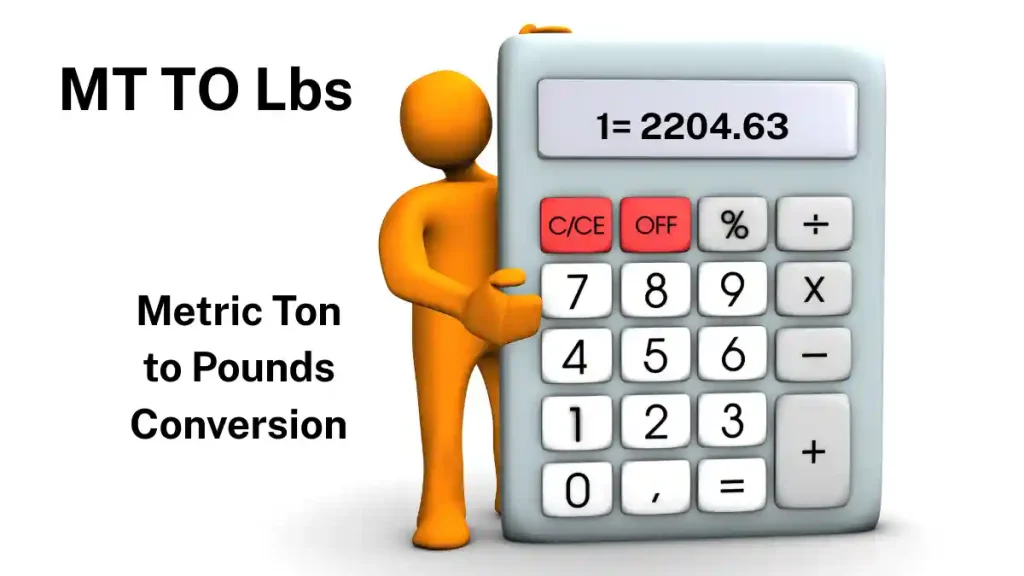How to Convert MT to Lbs – A Complete Guide and calculator for conversion of metric ton unit
In international trade and heavy industries such as metal scrap, construction, shipping, and manufacturing, the accurate measurement of weight is crucial. Especially in countries like UAE, where trade is both global and fast-paced, converting units like metric tonnes to pounds is a daily necessity—particularly for businesses dealing in metal scrap exports and imports.
Here is metric ton pound conversion calculator, To find out metric ton how many pounds, enter the metric ton value in the input box. The tool instantly converts it to pounds, showing the accurate result. Click “Reset” to clear and enter new values easily.
MT tons to Lbs calculator
You can use the following calculator to find how many pounds is a metric ton, put mt value and find the pounds instantly
For metric ton conversion to pounds, enter the value in the “Metric Ton MT” input box. As you type, the equivalent weight in pounds will display instantly next to it. To clear the input and result, simply click the “Reset” button. Use this tool for quick and accurate MT unit to lbs conversions.
This article explains the conversion from metric tons to Lbs, its relevance in the metal industry, and why understanding this relationship is essential for businesses operating in regions like the UAE.
What Is a Metric ton or tonne?
A unit of measurement mt, also known as a tonne, is a unit of mass equal to 1,000 kilograms, or approximately 2,204.62262 lbs per mt. It is part of the metric system and widely used in most countries for industrial and commercial purposes.
What Is a Pound?
A pound is weight unit in the imperial system, used primarily in the United States and United Kingdom. One pound is equal to 0.45359237 kilograms. When dealing with international shipments, especially from the UAE to the US, accurate conversion between metric ton pounds becomes essential.
Why MT to lbs Conversion Is Important in the UAE Metal Industry
The UAE is a central hub for metal trading, especially used heavy equipment, metal scrap, and recycling materials. Exporters and importers of ferrous and non-ferrous metals, such as copper, aluminum, steel, and iron, must often convert metric ton to pounds when dealing with buyers from the US or countries using imperial units.
For example:
- Scrap yards in Sharjah’s Sajja Industrial Area often handle loads in metric tons, but American clients demand figures in pounds.
- Customs paperwork, shipping invoices, and product specification sheets frequently require dual unit reporting.
Conversion Formula (Metric Tonnes to Lbs)
To convert metric tons to pounds, use the following formula:
1 Metric Tons to pounds = 2,204.62262 Pounds (lbs)
Formula:
Pounds (lbs) = Metric Tons (MT) × 2204.62262
Examples of Conversion
Example 1: Convert 1 MT to Pounds
1 × 2204.62262 = 2204.62 lbs
Example 2: Convert 3 Metric ton to lbs conversion
3 × 2204.62262 = 6613.87 lbs
Example 3: Convert 0.5 MT to lbs
0.5 × 2204.62262 = 1102.31 lbs
Quick Reference Table for metric ton in pounds
| Metric Tons (MT) | Pounds (lbs) |
|---|---|
| 0.1 | 220.46 |
| 0.5 | 1102.31 |
| 1 | 2204.62 |
| 2 | 4409.25 |
| 3 | 6613.87 |
| 5 | 11023.11 |
| 10 | 22046.23 |
Real-Life Application in the Metal Scrap Business
Let’s say you own or manage a metal scrap company in the UAE and are preparing a shipment of 5 metric tons of copper scrap to a buyer in the United States. The client needs to know the shipment weight in pounds for customs clearance and payment calculations.
Using the formula:
5 × 2204.62262 = 11,023.11 lbs
Your invoice would clearly state:
“Net Weight: 5 Metric Tons (11,023.11 lbs)”
This helps avoid confusion, reduces errors in logistics, and builds trust with international buyers.
Industrial Relevance of MT to lbs Conversion
In the metal industry, weights are essential for:
- Pricing based on per-pound or per-ton rates
- Determining freight costs
- Calculating load capacity for shipping containers or trucks
- Preparing customs documents
- Evaluating recyclables and raw material input/output
For instance, steel coils, metal bars, and scrap bundles are often weighed in metric tons at the source (e.g., UAE), but sold by the pound in US markets.
UAE’s Role in Global Metal Trade
The UAE, especially through ports like Jebel Ali (Dubai) and industrial zones in Sharjah, serves as a transit hub for metal recycling and heavy machinery. Companies working in the UAE must be proficient in both metric and imperial units due to their diverse international clientele.
Whether it’s a scrap export company, a used heavy vehicle seller, or a construction material supplier, converting between mt unit of measurement and lbs is more than math—it’s part of doing business globally.
Final Thoughts
Converting MT to lbs is a simple yet critical task in the global metal scrap industry, especially in international trading centers like the UAE. Using the standard formula and understanding the significance behind it ensures smoother operations, accurate reporting, and better relationships with clients from various countries.
